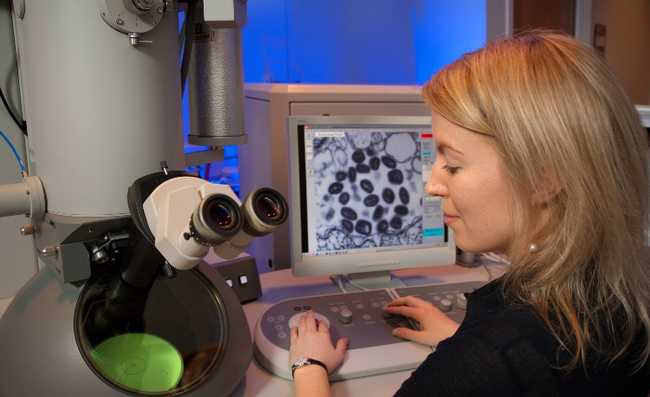What are viruses?
Viruses are extremely small and simple beings, situated on the border between living and non-living

Image: CDC on Unsplash
Extremely small and simple, viruses are situated on the border between living and non-living. They differ from other living beings because they have no cellular structure or metabolism of their own. Almost all types of viruses measure less than 200 nm in diameter, so they can only be observed under a microscope.
Virus structure
Viruses are mainly made up of two classes of chemical substances: proteins and nucleic acids. Viral protein molecules form an envelope - the capsid - that protects the nucleic acid, which can be formed by DNA or RNA.
This biochemical simplicity of viruses makes some scientists question whether these microorganisms are really living beings. Despite the diversity of opinions in this regard, even scientists who do not include viruses among living beings agree that they are biological systems, since they have genetic material.
viral reproduction
Viruses are considered obligate intracellular parasites, as they only reproduce within a host. Virus reproduction involves two processes: the duplication of genetic material and protein synthesis.
The penetration and subsequent multiplication of a virus in the host cell is called a viral infection. Once inside the cell, the virus nucleic acid (DNA or RNA) duplicates itself and directs the synthesis of viral proteins. The combination of the two components - nucleic acid and proteins - gives rise to new viruses, which leave the cell where they were formed and go on to infect new hosts.
Most viruses are highly specific to their host, that is, usually a virus is only able to attack one or a few types of cells. The polio virus, for example, infects only nerve, intestinal and throat lining cells. The flu virus, on the other hand, is quite versatile and can infect many different types of human cells.
HIV virus reproduction
HIV, the virus that causes AIDS, has a different reproduction cycle than other viruses. It is made up of proteins, two identical RNA molecules and some reverse transcriptase enzyme molecules. This enzyme makes it possible to produce DNA molecules from RNA molecules, exactly the opposite of what usually happens in cells.
Upon entering the host cell, the HIV envelope fuses with the cell membrane, releasing its RNA and reverse transcriptase. From viral RNA, this enzyme produces a DNA molecule that penetrates the nucleus of the attacked cell and integrates with the host cell's genetic material. Once integrated into it, the viral DNA starts to produce RNA molecules. Some of them will constitute the genetic material of the new viruses, while others will command the production of proteins and reverse transcriptase. The union of proteins, enzymes and viral RNA gives rise to new viruses.
HIV mainly attacks certain blood cells that command the entire defense system of the human body against infections. Attacked by the virus, these cells lose their ability to defend the body, which is vulnerable to infections that would not affect a healthy person.
The main symptoms of HIV are coughing and wheezing, difficulty in swallowing, diarrhea, fever, loss of vision, mental confusion, abdominal cramps and vomiting. Prevention against this disease consists of using condoms and testing blood before transfusions.










